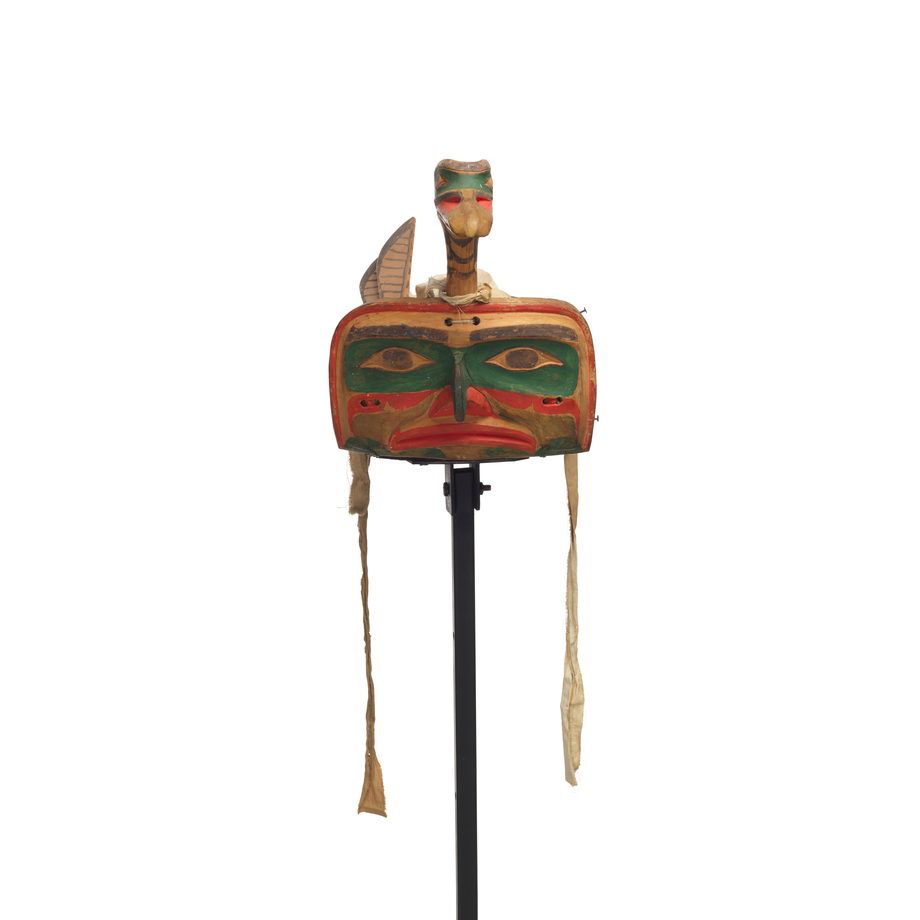Łałk´uxwiwe’
Mallard Headdress
Mallard headdresses are mostly worn by women in the Big House. Both of these mallard headdresses are carved from nine pieces of alder. Not much is known about these particular mallard headdresses which were mistakenly recorded as loons. This lack of reliable documentation and loss of knowledge exposes the long-term legacy of the Potlatch Ban and represents its enduring impact on the Kwakwaka’wakw people.
Owner
Hiłamas, “Captain John” Speck, Ławit´sis (Turnour Island)
Creator
Ned Harris (attributed)
Catalogue Information
Materials
Wood, Alder; Wood, Cedar; Paint; Fibre, Cotton; Metal, Iron
Dimensions
45.0 cm (tip of beak to tail)
Accession Number
80.01.039
Physical Description
Bird headdress, carved from alder and yellow cedar in eleven separate pieces and mounted on a head-ring consisting of two twig hoops with upright twig supports lashed to them; the whole thing bound with strips of white cloth. To this is lashed with cord the body (in alder), the wings, and tail (of yellow cedar). There are six separate wing pieces; four are shaped like feathers and are lashed above the two larger side pieces. One wood piece on each side represents the wings, four other pieces on top of the headdress, the flight feathers (2 on each side), and another in the back represents the tail. Wings, feathers and tail are all carved in yellow cedar. A small cloth lashed to the head-ring covers the top of the headdress. The headdress is painted black, red and green on an unpainted background. Rectangular in shape, the central piece is carved to represent an anthropomorphic hawk head. Above is the duck’s head in two parts, neck and skull. The hawk’s beak is jointed and glued to the face/body. The duck’s head is jointed and nailed to the neck, which is jointed and lashed to the hawk below. A cord, apparently for manipulating the duck is tied from the framework to the base of the duck’s neck.
